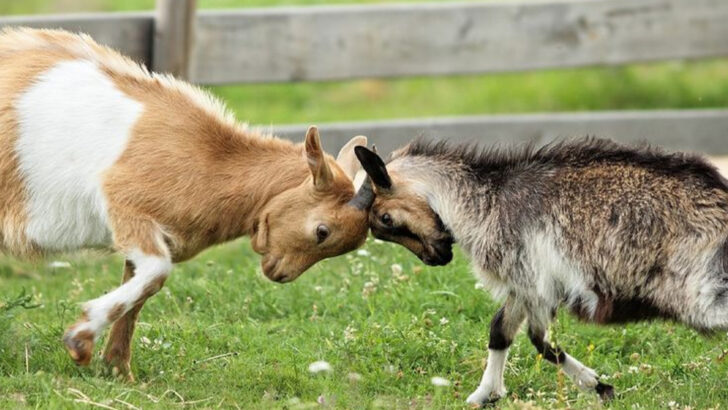That adorable head tilt? Might not be so innocent. We love when animals do quirky, lovable things—like chasing their tails or nibbling on our shoes. But not every cute behavior is just for show. Sometimes, that endless tail-chasing means more than goofiness. Sometimes, purring hides pain. And that clingy cuddling? It might be anxiety in disguise. Animals can’t speak our language, so they show us how they feel in their own way. The question is—are we really listening? In this list, you’ll find 11 behaviors we all “aww” over… and 5 that should send up red flags. Because behind every zoomie, sneeze, or stare, there’s a reason. And it’s time we figure out what our pets are really trying to say.
Cat Kneading
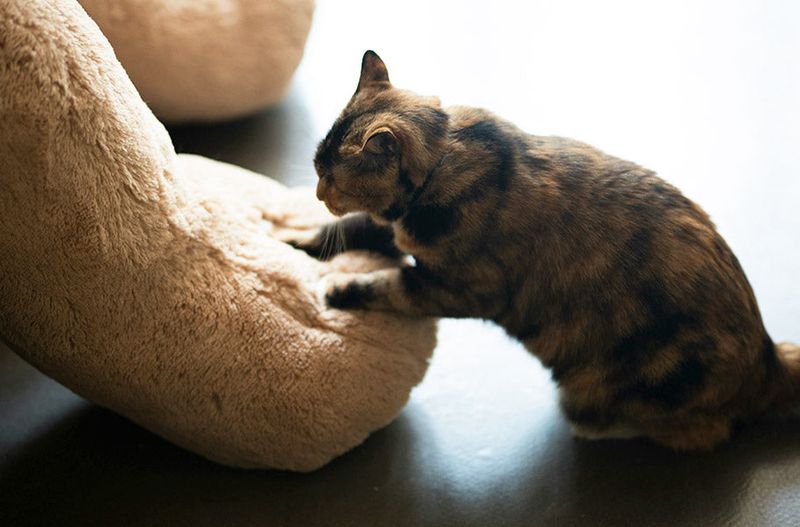
With paws that mimic a baker at work, cats knead to express contentment. This rhythmic pressing of their paws into soft surfaces is not only a charming behavior but also a throwback to kittenhood. When a cat kneads, it often purrs, creating an atmosphere of tranquility. Kneading is believed to be a residual instinct from when kittens knead their mother’s belly to stimulate milk flow. This endearing habit is a sign of trust and relaxation. However, excessive kneading might indicate stress or insecurity, so it’s important to observe your feline friend carefully.
Dog Tail Wagging

Dogs wag their tails to communicate happiness, and it’s a sight that never fails to warm the heart. A wagging tail is often accompanied by a joyful demeanor and playful antics. However, not all tail wags are the same. A slow, deliberate wag might signal caution or apprehension. Understanding the nuances of tail wagging helps pet owners gauge their dog’s emotions. This behavior is a key part of canine communication, reflecting excitement, curiosity, or even anxiety. It’s a reminder of the deep bond between humans and their four-legged companions.
Parrot Mimicking
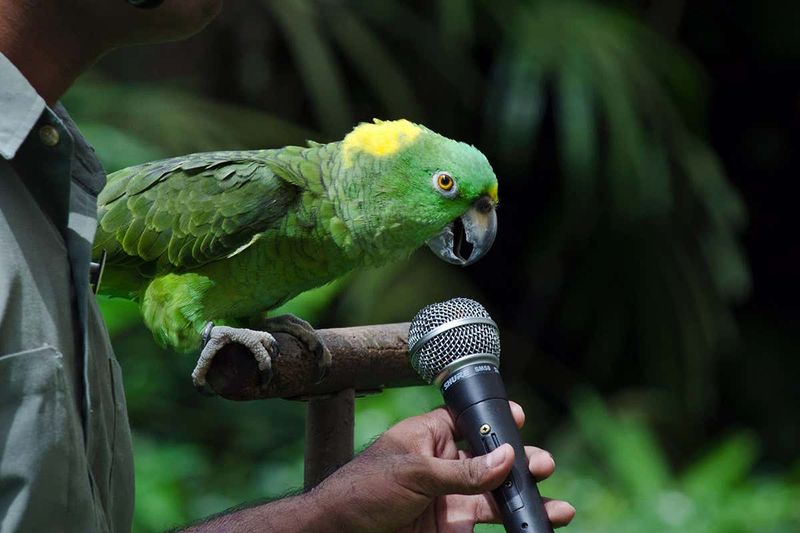
Parrots are renowned for their ability to mimic human speech, a skill that captivates many. This talent stems from their need to communicate within their flock, and it’s their way of bonding with humans. Hearing a parrot repeat words can be both amusing and endearing, showcasing their intelligence. However, constant mimicking without stimulation may indicate boredom. Parrots need mental stimulation and social interaction to thrive. Their vocal acrobatics are a testament to their adaptability and social nature, making them fascinating companions.
Squirrel Nut Burying
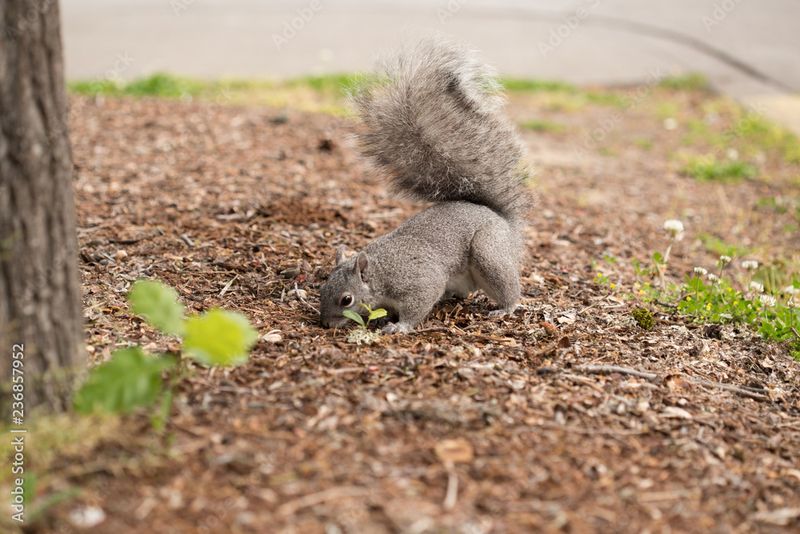
Squirrels burying nuts is a classic scene of preparation and survival. This behavior ensures they have a food supply during leaner times. Watching a squirrel meticulously dig and cover its treasure is both amusing and inspiring, reflecting nature’s wisdom. However, squirrels may forget some of their cache, leading to new trees sprouting. This inadvertent gardening benefits the ecosystem. While delightful, excessive burying can be a sign of anxiety if food sources are plentiful. Observing squirrels in action highlights the delicate balance of their natural instincts.
Rabbit Binkying
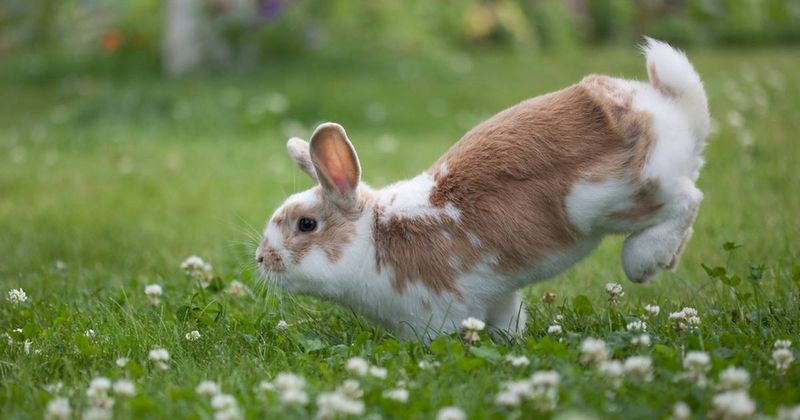
Rabbits show joy through a behavior known as binkying—leaping and twisting mid-air with apparent abandon. This charming display is a sign of happiness and well-being. Watching a rabbit binky is sure to bring a smile to anyone’s face. It’s a spontaneous expression of vitality and contentment. However, if a rabbit isn’t binkying, it could suggest stress or discomfort. Providing a safe and stimulating environment is key to encouraging this joyful behavior. Binkying is a delightful reminder of the exuberance of life.
Dolphin Leaping

Dolphins leap out of the water in a display of grace and agility that captivates onlookers. This behavior is not just for show; it aids in communication, navigation, and social interaction. Watching dolphins leap and play is a heartening reminder of the beauty of marine life. Leaping also helps dolphins scan their environment and remove parasites. However, changes in leaping patterns might indicate stress or environmental changes. Dolphins’ acrobatics are a testament to their intelligence and social nature, drawing fascination and admiration from humans.
Penguin Tobboganing

Penguins sliding on their bellies, known as tobogganing, is a delightful sight. This behavior conserves energy and allows them to travel swiftly over ice. It’s a playful yet practical way to navigate their harsh environment. Watching penguins toboggan is both amusing and endearing, showcasing their adaptability and resilience. However, sudden changes in tobogganing habits might signal distress or environmental shifts. This charming behavior highlights penguins’ unique approach to survival and their ability to turn challenges into opportunities for fun.
Horse Rolling
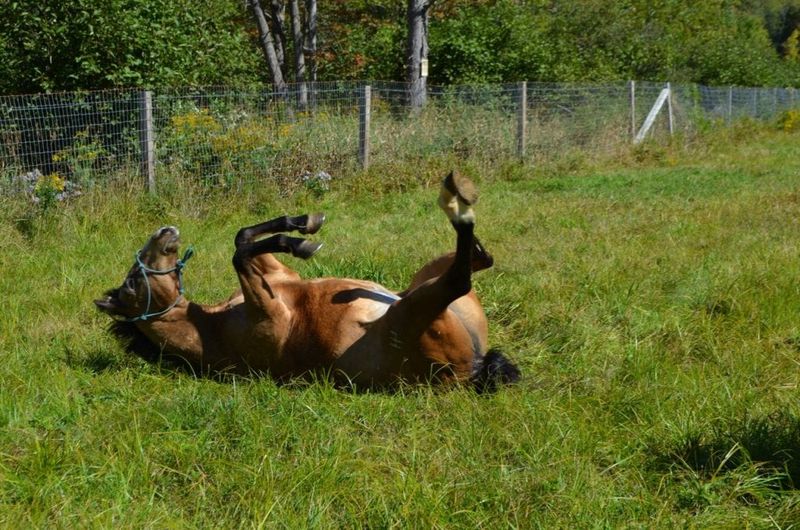
Horses roll on the ground to scratch itches and relax, a behavior that is both amusing and heartwarming. Watching a horse roll is a testament to their contentment and comfort in their surroundings. It’s a way for horses to groom themselves and relieve tension. However, frequent rolling might indicate discomfort or illness, so it’s important to monitor changes in this behavior. Rolling is a natural part of a horse’s routine, reflecting their need for physical care and relaxation. This engaging behavior is a window into the equine world.
Panda Playfulness

Pandas are known for their playful antics, often seen tumbling and playing with bamboo. This playful behavior is not only entertaining but also essential for their physical and mental well-being. Watching pandas play is a joyful experience, highlighting their gentle nature. However, a lack of playfulness might be a red flag for stress or health issues. Ensuring a stimulating environment is crucial for their happiness. Pandas’ playfulness is a charming reminder of the importance of leisure and joy in life, captivating audiences worldwide.
Elephant Trunk Hugs
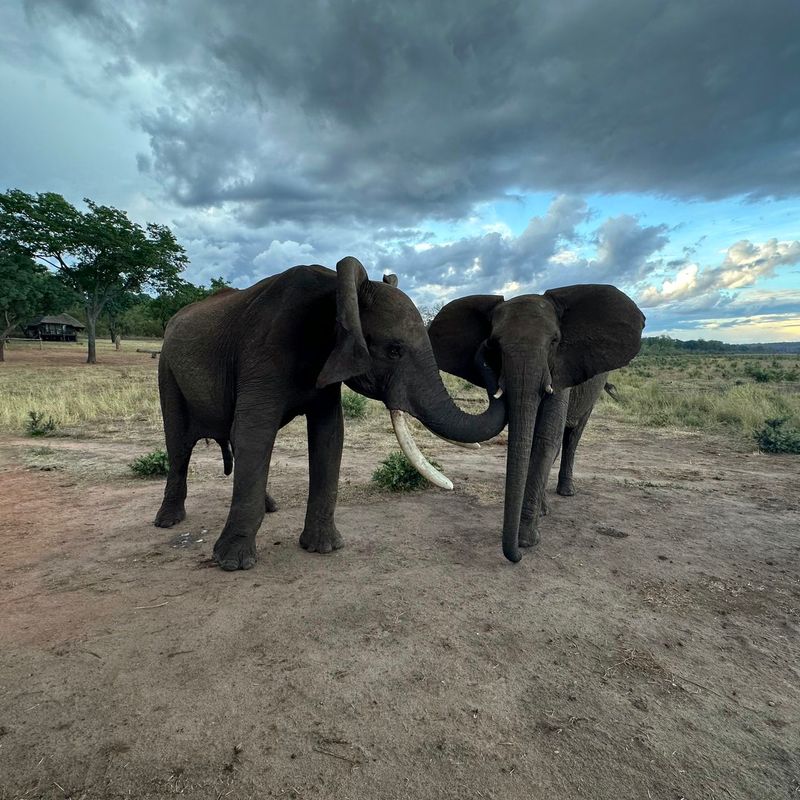
Elephants express affection through trunk hugs, a behavior that resonates with many. This gentle gesture strengthens social bonds and provides comfort. Observing elephants hugging with their trunks is a heartwarming sight, reflecting their deep social connections. However, excessive trunk intertwining can indicate stress or anxiety. Understanding trunk hugs helps in appreciating elephants’ complex social structures. This behavior is a beautiful example of the emotional depth and intelligence of these magnificent creatures, highlighting the importance of family and friendship in the animal kingdom.
Otter Hand-Holding
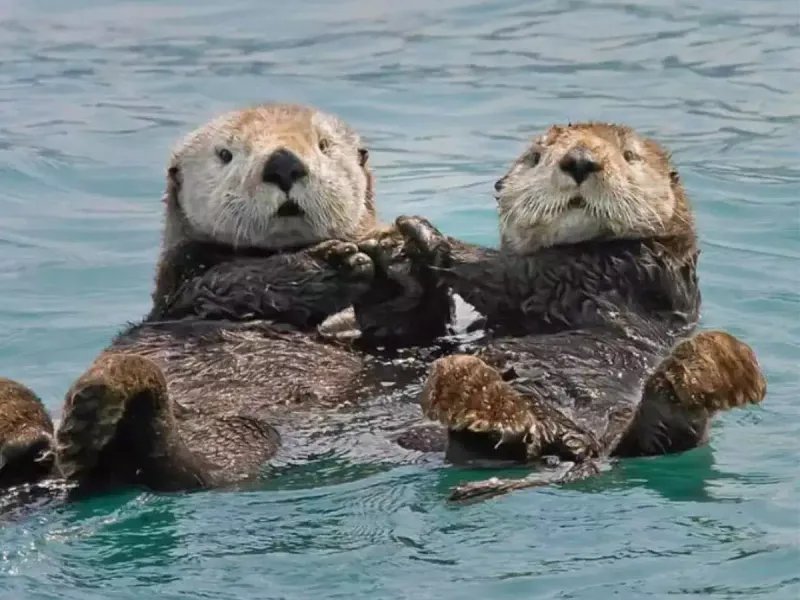
Otters hold hands while floating to prevent drifting apart, a behavior that’s both practical and endearing. This adorable sight ensures they stay together while resting on the water’s surface. However, if otters frequently separate or show reluctance to hold hands, it might indicate stress or environmental disturbances. Understanding this behavior highlights the strong social bonds otters form. Hand-holding is a charming symbol of connection and security, making otters a favorite among animal lovers. It’s a reminder of the importance of unity and trust in nature.
Dog Excessive Barking

Excessive barking in dogs can be a sign of underlying issues. While barking is a natural communication method, too much can indicate boredom, anxiety, or even health problems. Understanding why a dog barks excessively helps address potential concerns. It might be a call for attention, a response to unfamiliar stimuli, or a sign of discomfort. Observing changes in barking patterns is crucial for early intervention. While a dog’s bark is its voice, ensuring it’s not overused is essential for its well-being. Excessive barking is a red flag that requires attention.
Cat Hiding Constantly
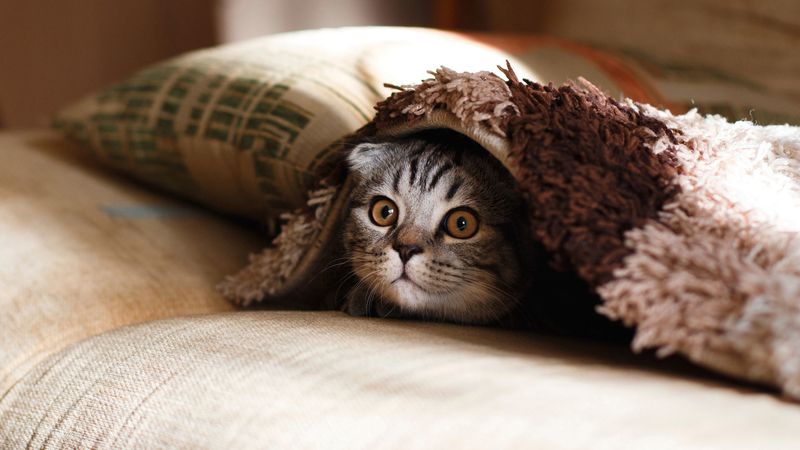
If a cat frequently hides, it might be a sign of stress or fear. While seeking quiet spots is normal, constant hiding is concerning. It could indicate discomfort or changes in the cat’s environment. Understanding the reasons behind a cat’s hiding behavior is essential for their well-being. Offering a safe and calm environment can help alleviate stress. It’s important to monitor other signs of distress to address any underlying issues promptly. Constant hiding is a red flag that should not be ignored, as it may affect the cat’s health and happiness.
Bird Feather Plucking
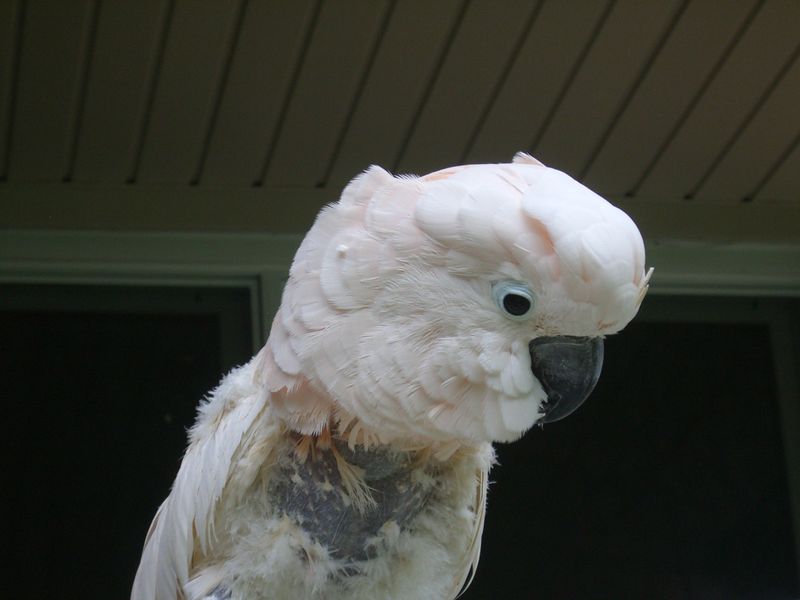
Feather plucking in birds, especially parrots, can be a distress signal. While grooming is normal, excessive plucking might indicate stress, boredom, or health issues. Understanding this behavior helps in identifying potential causes and seeking appropriate solutions. Environmental enrichment and social interaction are crucial for preventing this behavior. Observing changes in a bird’s grooming habits is important for their overall well-being. Feather plucking is a significant red flag that requires immediate attention to ensure the bird’s health and happiness. Addressing this behavior is vital for their care.
Hamster Cheek Pouch Overloading
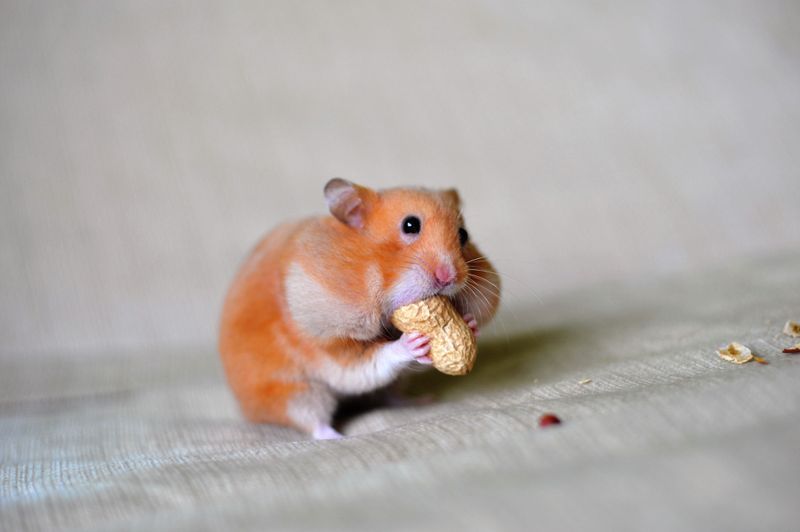
Hamsters store food in their cheek pouches, a behavior that’s both practical and endearing. However, overloading these pouches can lead to health issues. It’s important to monitor how hamsters use their pouches to prevent problems. While it’s normal for them to store food, excessive hoarding might indicate stress or a lack of resources. Providing a balanced diet and a safe environment helps in managing this behavior. Cheek pouch overloading is a red flag that suggests reviewing the hamster’s living conditions. Ensuring their comfort is essential for their well-being.
Goat Headbutting
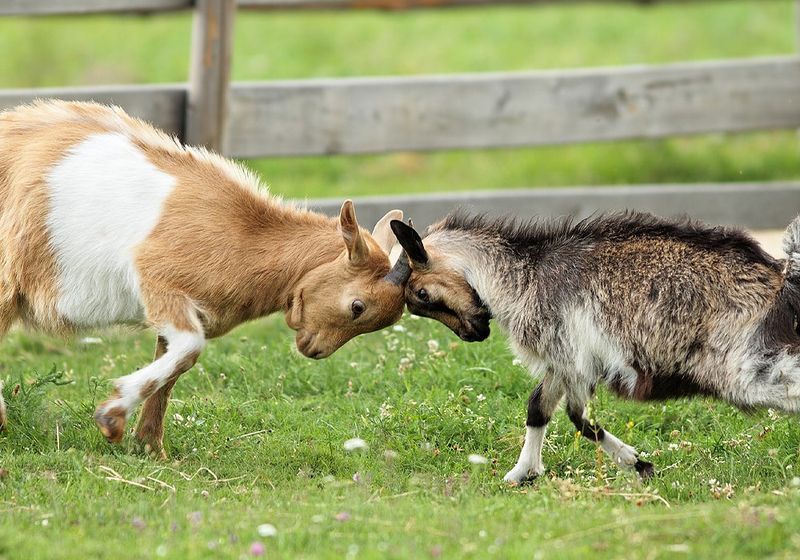
Have you ever watched goats playfully headbutt each other? While this behavior appears to be all fun and games, it serves a deeper purpose in the goat world. Young goats, known as kids, engage in headbutting to establish social hierarchies within their group.
This playful combat allows them to practice skills necessary for adult interactions. However, excessive or aggressive headbutting can be a red flag. It may indicate stress or discomfort, often caused by overcrowding or inadequate resources.
Providing ample space and proper enrichment can help reduce unwanted aggression. Interestingly, the Nubian goat is known for its gentle nature despite this headstrong behavior.

